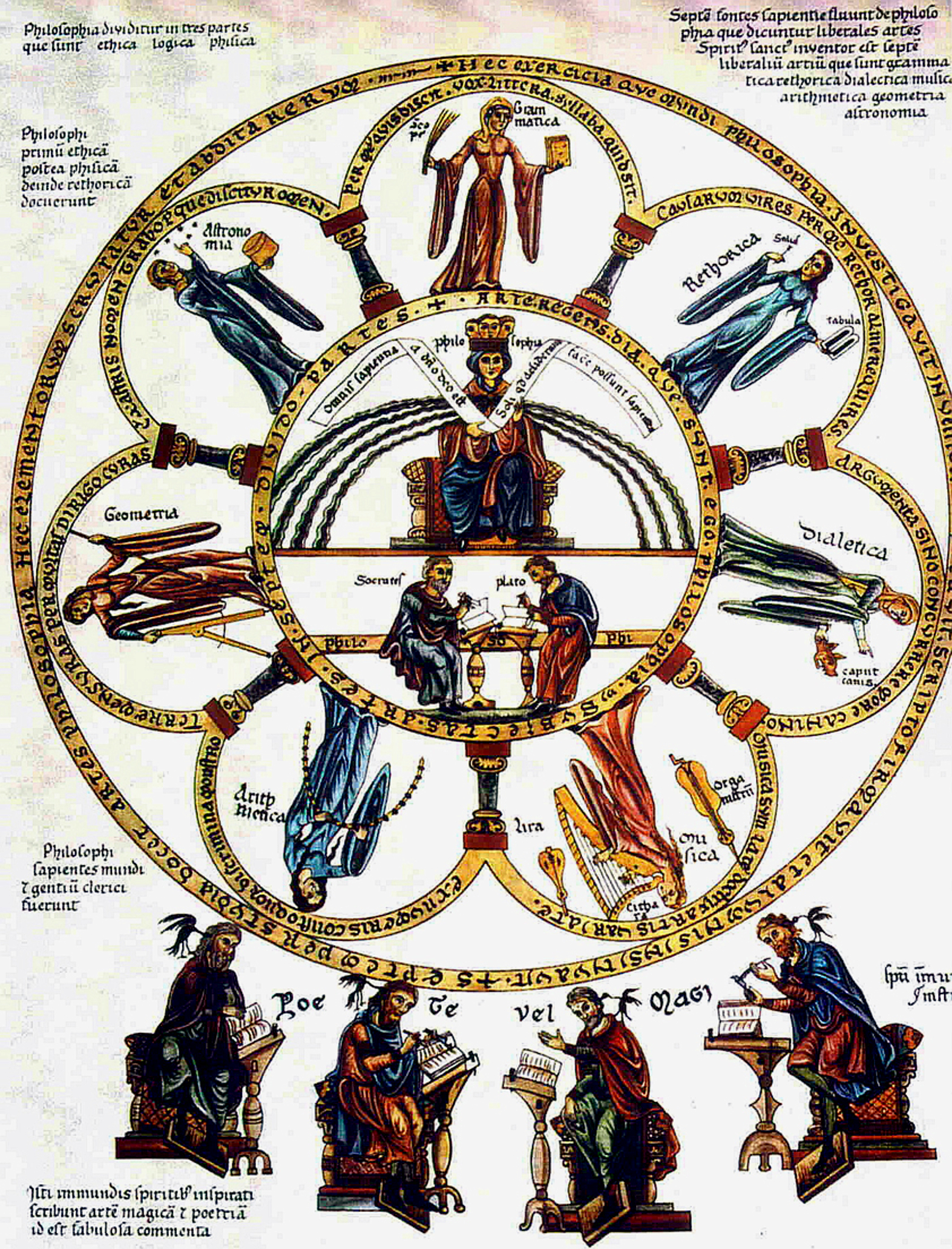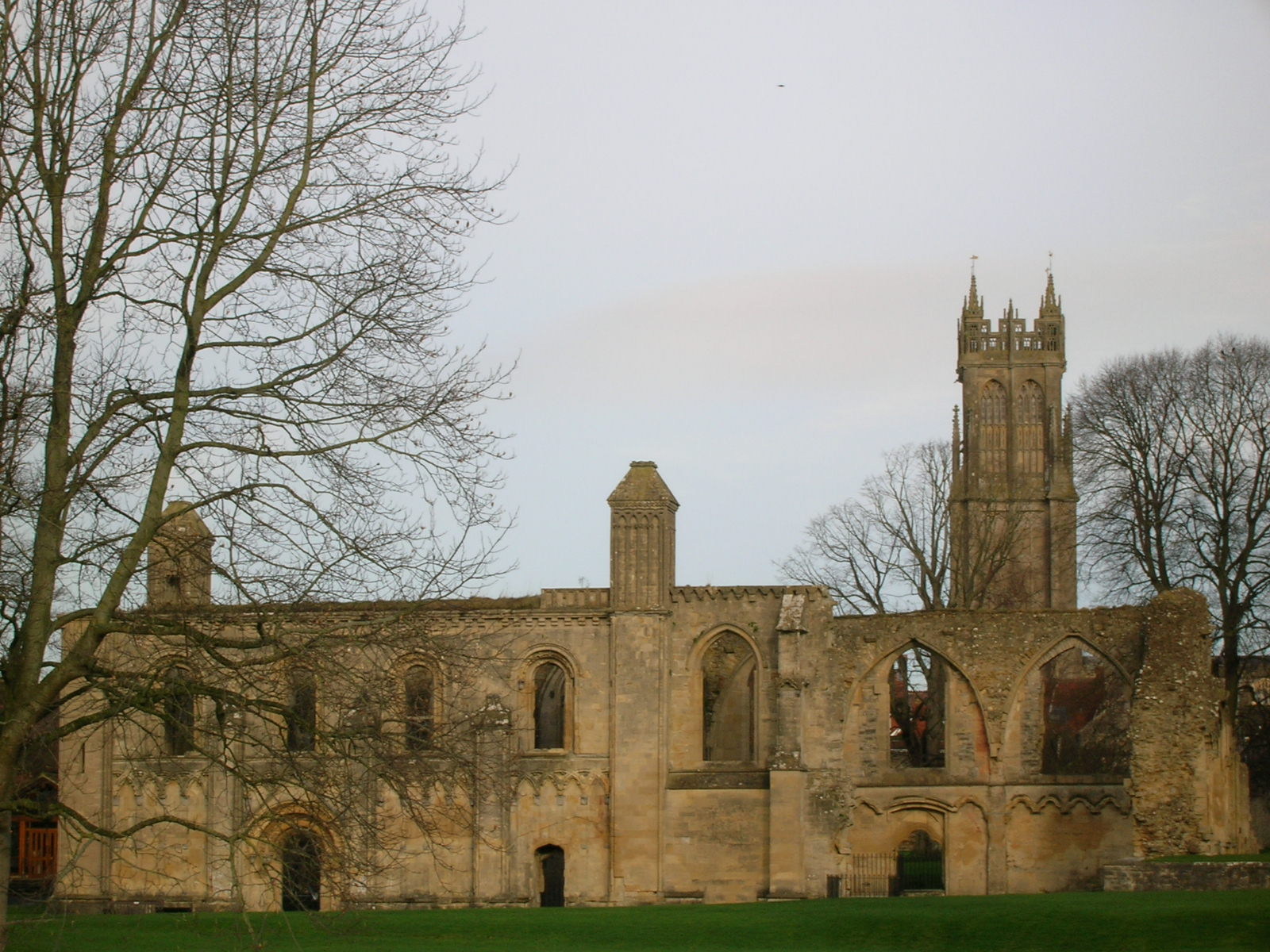I volunteered at the elementary school again this year, mostly in the first and sixth grade classrooms. I always wonder what the kids in the class think about the extra adult in the room. I remember when I was an elementary school student, that the reading groups were led by an adult (usually female) who came to the classroom expressly for that purpose. In retrospect, these adults were probably parent volunteers. As a child, though, I had just a vague idea that these women were extra teachers from somewhere.
Anyway, with school year endings and beginnings on everybody's minds around here, I thought I'd post something about education in the middle ages.
My kids and their classmates spent the year learning the 3 R's: reading, 'riting, and 'rithmatic. Medieval scholars' educations were built around the 7 liberal arts: Grammar, Logic, Rhetoric, Arithmetic, Geometry, Music, and Astronomy.
Grammar. Specifically, medieval students needed to learn Latin grammar. Latin was the international language of the middle ages. Textbooks were written in Latin, lectures spoken in Latin, and dissertations argued in Latin. For a look at a Modern English translation of a 10th century grammar text, see Aelfric's Colloquy.
Logic. Grammar was learning to understand. Logic (or dialectic) was learning how to think. Popular works of logic studied in the middle ages included Boethius' Consolation of Philosophy and various works of Aristotle.
Rhetoric. Rhetoric was the study of communication. Scholars learned rhetoric to better use the skills gained while studying Grammar and Logic. Students read Cicero, Augustine, and Bede.
 |
| The Seven Liberal Arts surrounding Philosophy, as illustrated in the 11th-cent. manuscript Hortus deliciarum. Image courtesy Wikimedia commons. Note the scholars underneath the Arts. |
Grammar, logic, and rhetoric made up the trivium. Many medieval universities awarded their lowest degrees to scholars who had mastered the trivium. These scholars were then called bachelors. The rest of the liberal arts constituted the quadrivium.
Arithmetic. Today when students learn arithmetic they learn addition, subtraction, multiplication, and division. In the middle ages arithmetic referred to number theory. It also encompassed the symbolism of number. For example, seven symbolized perfection because it was the number of the days of the week and the number of visible planetary bodies. Three referred to the Godhead.
Geometry. The works of Euclid were known throughout the middle ages.
Music. Like arithmetic, music referred to music theory, not to the practical knowledge of learning an instrument or voice.
Astronomy. Ptolomy's writings on astronomy survived into the middle ages, and medieval astronomers based their understanding of the universe on Ptolomy's models. Like Ptolomy, medieval thinkers believed that the Earth was the center of the universe. Like Ptolomy, the medieval astronomer combined astronomy with astrology.
Upon his studying all 7 liberal arts and defending an oral dissertation, the university awarded the student the degree of Master of Arts. The master could then apply for a teaching licence or continue studying at the university to become a doctor of law, of theology, of medicine, or of philosophy.
